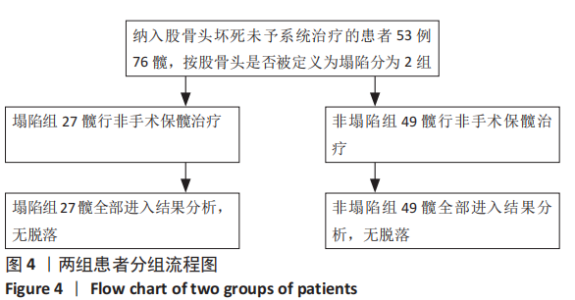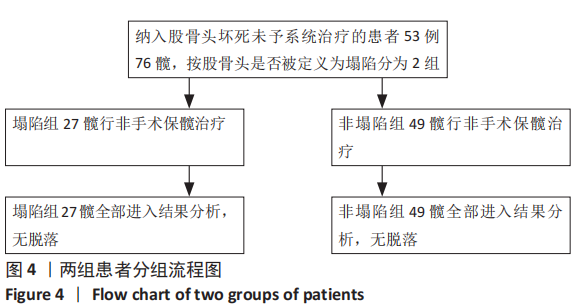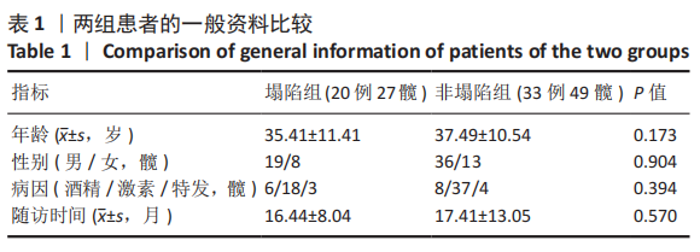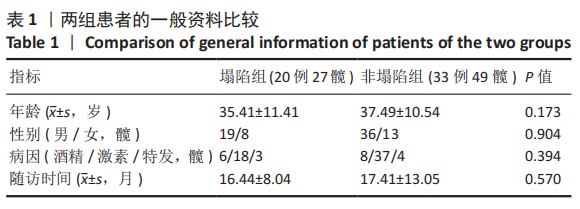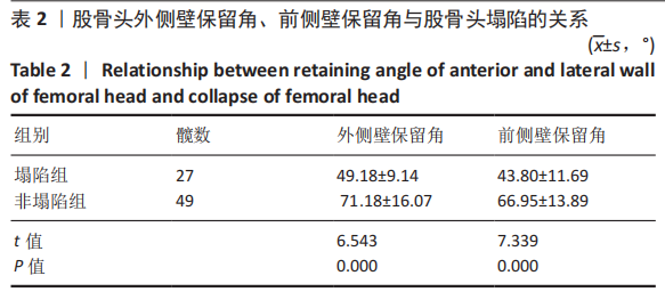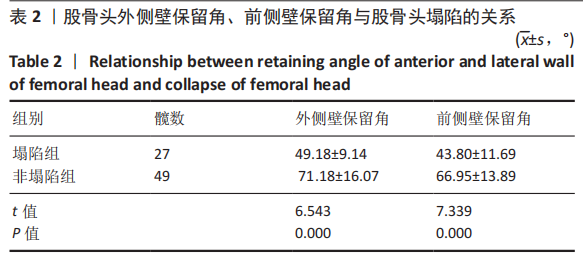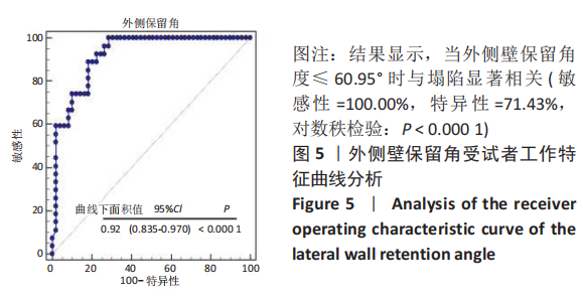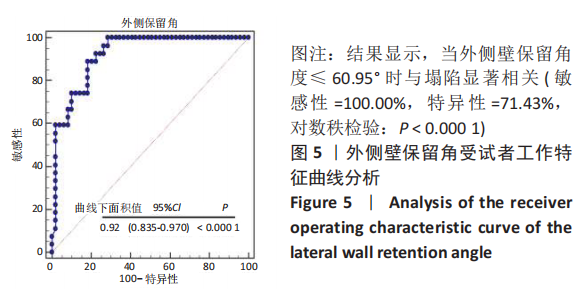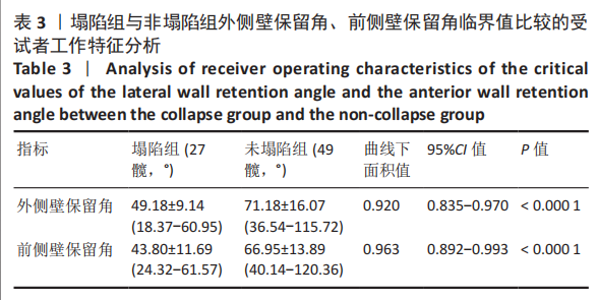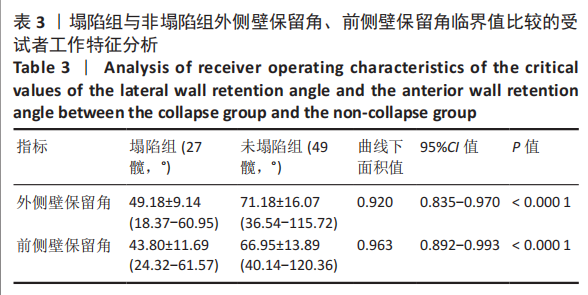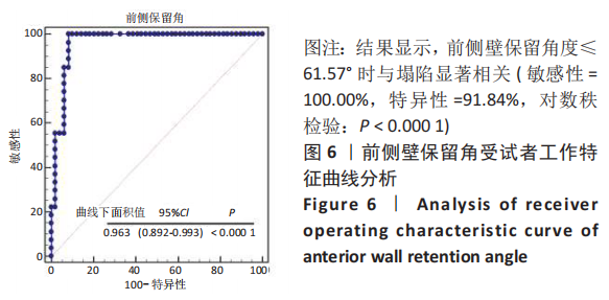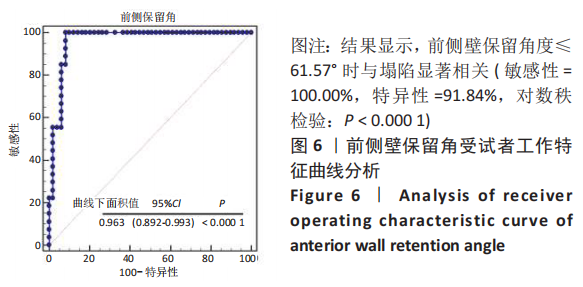[1] KAUSHIK AP, DAS A, CUI Q. Osteonecrosis of the femoral head: An update in year 2012. World J Orthop. 2012;3:49-57.
[2] ZALAVRAS CG, LIEBERMAN JR. Osteonecrosis of the femoral head: evaluation and treatment. J Am Acad Orthop Surg. 2014;22:455-464.
[3] OHZONO K, SAITO M, TAKAOKA K, et al. Natural history of nontraumatic avascular necrosis of the femoral head. J Bone Joint Surg Br. 1991;73:68-72.
[4] FICAT RP. Idiopathic bone necrosis of the femoral head: early diagnosis and treatment. J Bone Joint Surg Br. 1985;67:3-9.
[5] MONT MA, HUNGERFORD DS. Non-traumatic avascular necrosis of the femoral head. J Bone Joint Surg Am. 1995;77:459-474.
[6] STEINBERG ME, HAYKEN GD, STEINBERG DR. A quantitative System for staging avascular necrosis .J Bone Joint Surg Br. 1995; 77:34-41.
[7] YOSHIDA H, FAUST A, WILCKENS J, et al. Hree-dimensional dynamic hip contact area and pressure distribution during activities of daily living. J Biomech. 2005; 24(8):1.
[8] 杨善卿.单髓负重的生物力学探讨[J].生物力学,1990,5(7):920.
[9] GENDA E, IWASAKI N, LI G, et al. Normal hip joint contact pressure distribution in single-leg standing-effect of gender and anatomic parameters. J Biomech. 2001;34(7):895.
[10] MATTA JM, ANDERSON LM, EPSTEIN HC, et al. Fractures of the acetabulum. A retrospective analysis. Clin Orthop. 1986;205(6):230.
[11] NAGOYA S, NAGAO M, TAKADA J, et al. Predictive factors for vascularized iliac bone graft for nontraumatic osteonecrosis of the femoral head. J Orthop Sci. 2004;9(6):566-570.
[12] KERBOUL M, THOMINE J, POSTEL M, et al. The conservative surgical treatment of idiopathic aseptic necrosis of the femoral head. J Bone Joint Surg Br. 1974;56:291-296.
[13] KOO KH, KIM R. Quantifying the extent of osteonecrosis of the femoral head. A new method using MRI. J Bone Joint Surg Br. 1995;77:875-880.
[14] CHERIAN SF, LAORR A, SALEH KJ, et al. Quantifying the extent of femoral head involvement in osteonecrosis. J Bone Joint Surg Am. 2003;85:309-315.
[15] KIM YM, AHN JH, KANG HS, et al. Estimation of the extent of osteonecrosis of the femoral head using MRI. J Bone Joint Surg Br. 1998;80:954-958.
[16] VOLOKH KY, YOSHIDA H, LEALI A, et al. Prediction of femoral head collapse in osteonecrosis. J Biomech Eng. 2006;128(3):467-470.
[17] LIU B, YI H, ZHANG Z, et al. Association of hip joint effusion volume with early osteonecrosis of the femoral head. Hip Int. 2012;22(2):179-183.
[18] 袁铄慧, 童培建. 基于三维重建 CT 的股骨头坏死体积分期标准初探[J].浙江中医药大学学报,2014,38(11):1311-1314.
[19] CHI Z, WANG S, ZHAO D, et al. Evaluating the blood supply of the femoral head during different stages of necrosis using digital subtraction angiography. Orthopedics. 2019;42(2):e210-e215.
[20] 何晓铭, 龚水帝, 庞凤祥, 等. 抵抗素水平与股骨头坏死塌陷进程的相关性[J]. 实用医学杂志 ,2019,35(4):579-583
[21] WU W, HE W, WEI QS, et al. Prognostic analysis of different morphology of the necrotic-viable interface in osteonecrosis of the femoral head. Int Orthop. 2018;42(1):133-139.
[22] KUBO Y, MOTOMURA G, IKEMURA S, et al. The effect of the anterior boundary of necrotic lesion on the occurrence of collapse in osteonecrosis of the femoral head. Int Orthop. 2018;42(7):1449-1455.
[23] LI TX, HUANG ZQ, LI Y, et al. Prediction of Collapse Using Patient-Specific Finite Element Analysis of Osteonecrosis of the Femoral Head. Orthop Surg. 2019;11(5): 794-800.
[24] LIU GB, LI R, LU Q, et al. Three-dimensional distribution of cystic lesions in osteonecrosis of the femoral head. J Orthop Trans. 2019;22:109-115.
[25] YUE Y, YANG H, LI Y, et al. Combining ultrasonic and computed tomography scanning to characterize mechanical properties of cancellous bone in necrotic human femoral heads. Med Eng Phys. 2019;66:12-17.
[26] KUBO Y, MOTOMURA G, IKEMURA S, et al. Effects of anterior boundary of the necrotic lesion on the progressive collapse after varus osteotomy for osteonecrosis of the femoral head. J Orthop Sci. 2020;25(1):145-151.
[27] 李子荣. 股骨头坏死临床诊疗规范[J]. 中国矫形外科杂志,2016,8(1):49-54.
[28] CHEN L, HONG G, FANG B, et al. Predicting the collapse of the femoral head due to osteonecrosis: From basic methods to application prospects. J Orthop Translat. 2017;11:62-72.
[29] NISHII T, SUGANO N, OHZONO K, et al. Significance of lesion size and location in the prediction of collapse of osteonecrosis of the femoral head: a new three-dimensional quantification using magnetic resonance imaging. J Orthop Res. 2002;20:130-136.
[30] ANCELIN D, REINA N, CAVAIGNAC E, et al. Total hip arthroplasty survival in femoral head avascular necrosis versus primary hip osteoarthritis: case-control study with a mean 10-year follow-up after anatomical cementless metal-on-metal 28mm replacement. Orthop Traumatol Surg Res. 2016;102:1029-1034.
[31] MARTZ P, MACZYNSKI A, ELSAIR S, et al. Total hip arthroplasty with dual mobility cup in osteonecrosis of the femoral head in young patients: over ten years of follow-up. Int Orthop. 2017;41:605-610.
|
